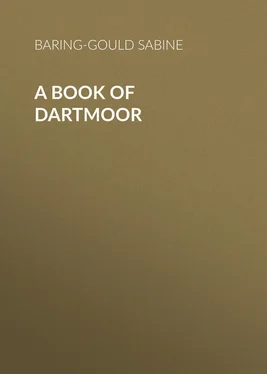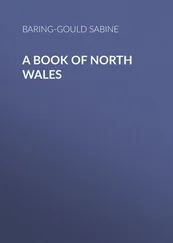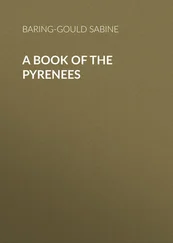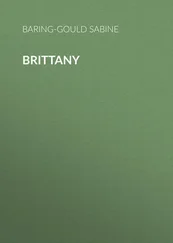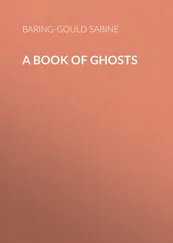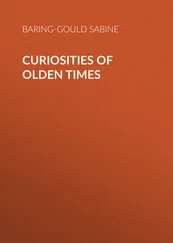Sabine Baring-Gould - A Book of Dartmoor
Здесь есть возможность читать онлайн «Sabine Baring-Gould - A Book of Dartmoor» — ознакомительный отрывок электронной книги совершенно бесплатно, а после прочтения отрывка купить полную версию. В некоторых случаях можно слушать аудио, скачать через торрент в формате fb2 и присутствует краткое содержание. Жанр: foreign_antique, foreign_prose, на английском языке. Описание произведения, (предисловие) а так же отзывы посетителей доступны на портале библиотеки ЛибКат.
- Название:A Book of Dartmoor
- Автор:
- Жанр:
- Год:неизвестен
- ISBN:нет данных
- Рейтинг книги:5 / 5. Голосов: 1
-
Избранное:Добавить в избранное
- Отзывы:
-
Ваша оценка:
- 100
- 1
- 2
- 3
- 4
- 5
A Book of Dartmoor: краткое содержание, описание и аннотация
Предлагаем к чтению аннотацию, описание, краткое содержание или предисловие (зависит от того, что написал сам автор книги «A Book of Dartmoor»). Если вы не нашли необходимую информацию о книге — напишите в комментариях, мы постараемся отыскать её.
A Book of Dartmoor — читать онлайн ознакомительный отрывок
Ниже представлен текст книги, разбитый по страницам. Система сохранения места последней прочитанной страницы, позволяет с удобством читать онлайн бесплатно книгу «A Book of Dartmoor», без необходимости каждый раз заново искать на чём Вы остановились. Поставьте закладку, и сможете в любой момент перейти на страницу, на которой закончили чтение.
Интервал:
Закладка:
Another branch threw itself over the Himalayas, and covered India with identical monuments. Again another turned west; it traversed the Caspian and left innumerable traces along the northern slopes of the Caucasus. The Kuban valley is crowded with their dolmens. They occupied the Crimea, and then struck for the Baltic. That a branch had passed through Asia Minor and Greece, and constituted itself as the Etruscan power in Italy, is probable but not established. The northern stream strewed Mecklenburg and Hanover with its remains, occupied Denmark and Lower Sweden, crossed into Britain, and took complete possession of the British Isles. Other members of the same swarm skirted the Channel and crowded the plateaux and moors of Western and Central France with their megalithic remains. The same people occupied Spain and Portugal, the Balearic Isles, Corsica and Sardinia, and Northern Africa, and are now represented by the Koumirs and Kabyles. To this race the name of Iberian, Ivernian, or Silurian has been given. It contributed its name to Ireland (Erin or Ierne ), where it maintained itself, but was known to the conquering Gaels as the Tuatha da Danann and Firbolgs, two branches of the same stock. The name of Damnonia given to Devon is probably due to these same Danann, who were also found in the south of Scotland. When this great people reached Europe, Japan, India, Africa, before its branches had begun to ramify to east and west, to south and north, its religious doctrines and its practices had become stereotyped, and almost ineradicably ingrained into the consciousness of the entire stock.
If we desire to understand what their peculiar views were, what were the dominant ideas which directed their conduct, and which led them to erect the monuments which are marvels to us, even at the present day, we must go to China.
Let us look for a moment into China at the present day. At first sight, the Chinese strike us as being not only geographically our antipodes, but as being our opposites in every particular – mental, moral, social; in language as in ideas.
The Chinese language is without an alphabet and without a grammar. It is made up of monosyllables that acquire their significance by the position in which they are placed in a sentence. In customs the Chinese differ from us as much. In mourning they wear white; a Chinese dinner begins with the dessert and ends with the soup; a scholar, to recite his lessons, turns his back on the teacher. But it is chiefly in the way in which the living and the dead are regarded as forming an indissoluble commonwealth, that the difference of ideas is most pronounced. Regard for the dead is the first obligation to a Chinese. A man of the people who is ennobled, ennobles, not his descendants, but his ancestry. The duty of the eldest son of the family is to maintain the worship of the ancestors. Denial of a sepulchre is the most awful punishment that can be inflicted; a Chinese will cheerfully commit suicide to gain a suitable tomb and cult after death. The most sacred spot on earth is the mausoleum, and that is perpetually inviolable. Consequently, if this principle could be carried out to the letter, the earth would be transformed into one vast necropolis, from the occupation of which the living would be in time entirely excluded. It is this respect for graves which stands in the way of the execution of works of public utility, such as canals and railroads; and it is the imperious obligation of maintaining the worship of ancestors that blocks conversion to Christianity. It is resentment against lack of respect shown to the dead, neglect of duty to the dead, which has provoked the massacres of Christians. A Chinese, under certain circumstances, is justified in strangling his father, but not in omitting to worship him after he has throttled him.
On the great Thibet plateau, geographically contiguous to the Chinese, and under the Empire of China, the Mongol nomads are so absolutely devoid of a grain of respect for their dead, that, without the smallest scruple, they leave the corpses of their parents and children on the face of the desert, to be devoured by dogs and preyed on by vultures.
If we look at the Nile valley we see that the ancient Egyptians were dominated by the same ideas as the Chinese. To them the tomb was the habitation par excellence of the family. Of the dwelling-houses of the old Egyptians the remains are comparatively mean, but their mausoleums are palatial. The house for the living was but as a tent, to be removed; but the mansion of the dead was a dwelling-place for ever.
Not only so, but just as the ancient Egyptian supposed that the Ka , the soul, or one of the souls of the deceased, occupied the monument, tablet, or obelisk set up in memorial of the dead, so does the Chinese now hold that a soul, or emanation from the dead, enters into and dwells in the memorial set up, apart from the tomb, to his honour.
Now if we desire to discover what was the distinguishing motive in life of the long-headed Neolithic man, we shall find it in his respect for the dead; and he has stamped his mark everywhere where he has been by the stupendous tombs he has erected, at vast labour, out of unwrought stones. He cannot be better described than as the dolmen-builder; that is to say, the man who erected the family or tribal ossuaries that remain in such numbers wherever he has planted his foot.
In China, it is true, there are no dolmens, but for this there is a reason. Before the descendants of the Hundred Families who entered the Celestial Empire had reached and obtained possession of mountains whence stone could be quarried, many centuries elapsed, and forced the Chinese to make shift with other material than stone, and so formed their habit of entombment without stone; but the frame of mind which, in a rocky land, would have prompted them to set up dolmens remained unchanged, and so remains to the present day.
The exploration of dolmens in Europe reveals that they were family or tribal burial-places, and were used for a long continuance of time. The dead to be laid in them were occasionally brought from a distance, as the bones show indication of having been cleaned of the flesh with flint scrapers, and to have been rearranged in an irregular and unscientific manner, a left leg being sometimes applied to a right thigh; or it may be that on the anniversary of an interment the bones of the deceased were taken out, scraped and cleaned, and then replaced.
In Algeria, and on the edge of the Sahara, are found great trilithons, that is to say, two huge upright stones, with one laid across at the top, forming doorways leading to nothing, but similar to those which are found at Stonehenge.
What was this significance?
We turn to the Chinese for an explanation, and find that to this day they erect triumphal gates – not now of stone, but of wood – in memory of and in honour of such widows as commit suicide so as to join their dear departed husbands in the world of spirits. On the other hand, our widows forget us and remarry.
The dolmen-builders were people with flocks and herds, and who cultivated grain and spun yarn. Their characteristic implement is the so-called celt, in reality an axe, sometimes perforated for the reception of a handle, most commonly not. The perforation belongs to the latest stage of Neolithic civilisation. Their weapons, or tools, were first ground. In about a score of places in France polishing rocks exist, marked with the furrows made by the axe when worked to and fro upon them, and others that are smaller have been removed to museums. At Stoney-Kirk, in Wigtownshire, a grinding-stone of red sandstone, considerably hollowed by use, was found with a small, unfinished axe of Silurian schist lying upon it. In the recent exploration of hut circles at Legis Tor a grindstone was found in one of the habitations, and on it an incomplete tool that was abandoned there before it was finished.
Читать дальшеИнтервал:
Закладка:
Похожие книги на «A Book of Dartmoor»
Представляем Вашему вниманию похожие книги на «A Book of Dartmoor» списком для выбора. Мы отобрали схожую по названию и смыслу литературу в надежде предоставить читателям больше вариантов отыскать новые, интересные, ещё непрочитанные произведения.
Обсуждение, отзывы о книге «A Book of Dartmoor» и просто собственные мнения читателей. Оставьте ваши комментарии, напишите, что Вы думаете о произведении, его смысле или главных героях. Укажите что конкретно понравилось, а что нет, и почему Вы так считаете.
